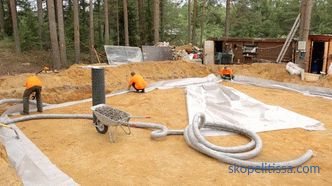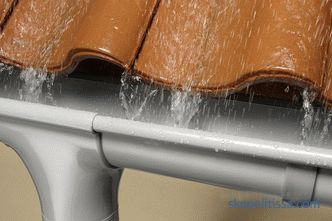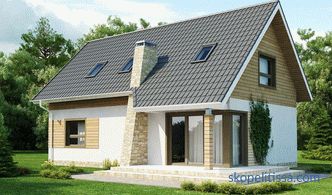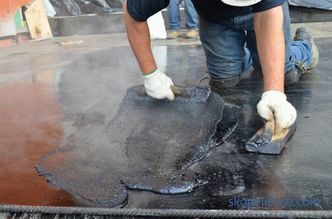This is an article about how to choose a bio-toilet to give. What are the types of dry closets, their advantages and disadvantages, what you should pay attention to when buying a dry closet. After reviewing the information provided, you will have a clear idea of what kind of bio-toilet is better to buy to give.
What to consider when choosing a dry closet
Before you buy a dry closet to the country, you should familiarize yourself with existing options. All toilets can be divided into three main categories: liquid, electrical and compost. Each design has features that are worth considering when making a choice.
Liquid
If you want to buy a bio-toilet for giving without smell and pumping, and without the need for some additional installation, this option will be one of the best.
Liquid dry closets are simple in use, completely destroy smells. Take a little space. But we must remember that the consumable liquid is chemically aggressive - it cannot be drained to the ground in the area near the plants and housing.
Inside consists of 2 tanks. The top is filled with water and a special deodorant. A special pump sewage transported to the lower tank with sanitary liquid.
Pluses : it is simple, compact, hygienic and any smell.
Minuses : requires additional consumables (deodorant, sanitary liquid). You can not just empty the tank into the ground. Significant weight of waste.
What should pay attention to when choosing a liquid dry closet:
-
Tank size . A full 24 liter tank weighs about 27 kg. In general, a lot, if you want to unplug it and move it somewhere to empty it. A small tank filled, weighs 14 kg for 12 liters.
-
Flush option . Piston and pump, work from the effort of the hand. Electric powered by an electric motor and requires batteries or a separate power supply. Piston - simple and reliable, electric - convenient.
-
Tank Filling Indicator . Eliminates the need to look into the lower tank for control.
-
Pressure relief valve . Due to the pressure difference when the tank is disconnected there may be splashing. The valve eliminates the likelihood of their occurrence.
Electric
The electric dry closet does not require consumables. Separates all of the liquid, which is then drained through a hose. The solid fractions are dried to a powder and discharged into a container.
On our site you can familiarize yourself with the most popular projects of "small forms" for a private house - from construction companies represented at the exhibition of houses "Low-Rise Country".
Pros : The minimum amount of waste, does not require any consumables.
Minuses : It does not cope with smells as well as a chemical bio-toilet - you need to install a hood. Requires a 220V electrical network, if electricity is regularly and permanently lost in the country, difficulties are inevitable. It is necessary to discharge the liquid from the toilet into the pit or directly into the ground.
Peat
Bacteria in peat actively process feces, turning them into compost suitable for use in the garden.
Easy to set up. Tank for sewage, tank with peat mixture. After each use, the special spreader pours waste products into the mixture. In more complex models, the liquid fractions are separated from the solid and taken out.
It is important to understand that compost suitable for gardening does not form immediately. Peat biotoilet waste turns into humus in 6-12 months, so you need to equip a place for storing "raw materials" for compost.
Pros : environmental friendliness, simplicity, garden compost on the way out.
Minuses : You need a hood, otherwise there will be a problem with the smell. Requires consumables. Large waste weight.
What should pay attention to :
-
Is there a vent pipe in the kit. An exhaust hood is required for peat toilet.
-
Hose for removal of fluid . If the toilet is used by 2 people or more, it is necessary to drain the water. After peat, the liquid is completely safe to dump directly into the soil.
-
The system for spreading the peat mixture should scatter the mixture evenly and be economical.
-
The presence of wheels on the tank for transportation. Significantly facilitates maintenance.
A few general points
When choosing any design of a dry closet, you should pay attention to the quality of the material. Plastic should be shockproof and durable, it depends on how much it will serve you.If the dry closet remains outside the house in the winter, all plastic has to be frost-resistant.
Washout designs are unsuitable for freezing temperatures, or require special anti-frost consumables.
Some models can only be used while sitting. Male "audience" about this is better to know in advance.
The height of the seat is chosen so that it is comfortable for everyone who will use the toilet. Tall people will not be comfortable on a low seat, and vice versa.
This can be interesting! In the article on the following link read about peat toilets to give .
Prices
When choosing a dry closet or toilet for giving, the price will depend on the type of construction, and various additional options.
Peat
If you need to buy a dry closet to the country cheaply, in Moscow a peat dry closet with a small tank will cost 5-6 thousand rubles.
The price for models with a large volume and various additional options (a system for separating liquid from solid fractions, active ventilation) is 10,000 rubles and more.
Consumables
Peat mixture . A 40 liter bag of the mixture (about 10 kg) costs 350 - 500 rubles. Enough for a family of 3 people for 2.5-3 months.
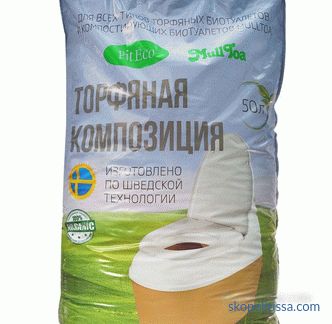
It can be interesting! In the article on the following link read about toilet for giving odorless .
Liquid
An inexpensive dry closet for a summer residence in Moscow can be bought for 3-4 thousand rubles. The price for more expensive models with a large tank and additional elements (electric flush, replaceable cartridges) reach 40,000 rubles and more.
Consumables
For work, the liquid toilet should use sanitary liquid, deodorant and special toilet paper, dissolved in the liquid environment of the toilet.
-
Deodorant , depending on the components it contains, costs 300 rubles per liter and more.
-
Sanitary fluid for the lower tank costs from 300 rubles per liter. This volume of fluid is enough for a family of 3 people for 3 months.
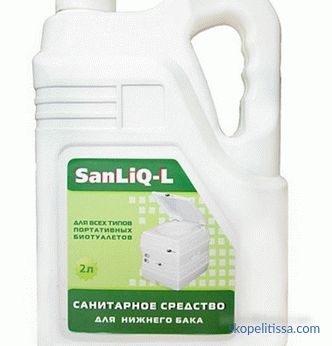
-
Soluble toilet paper . It costs from 40 to 400 rubles for a standard block of 4 rolls.
Electric
Complicated construction makes electric toilets the most expensive. Prices - from 20 to 100 thousand rubles and above. Additional consumables are required.
From the video you can find out how to choose a bio-toilet correctly:
This can be interesting! In the article following the link read about the modern extension to the house.
Conclusion
To buy a bio-toilet or a toilet for questioning you need to take into account various factors - the availability of electricity, ventilation, and the ability to safely dispose of waste. Liquid dry closets are easy to use, peat - eco-friendly, electric do not need consumables. Knowing the advantages and disadvantages of each design, you can make the right choice.
Rate this article, we tried for you
